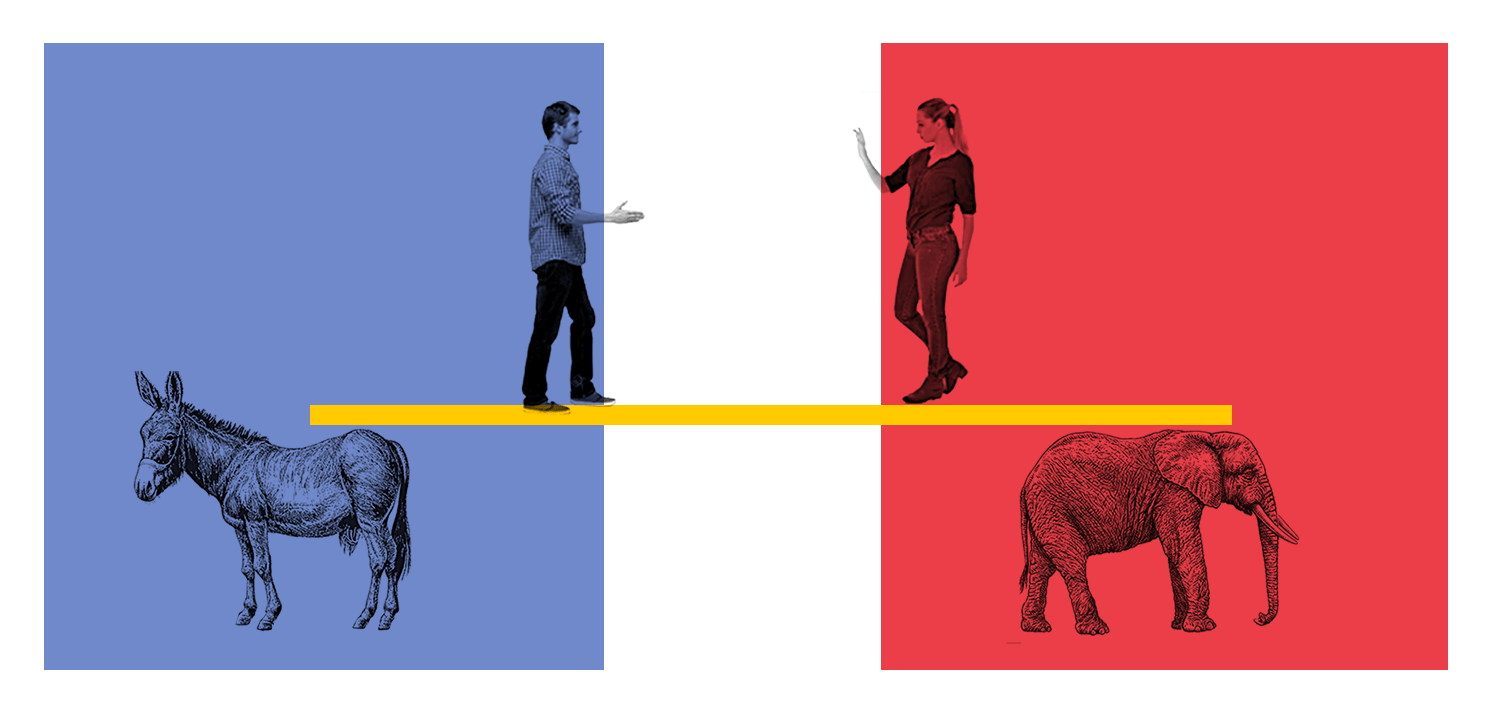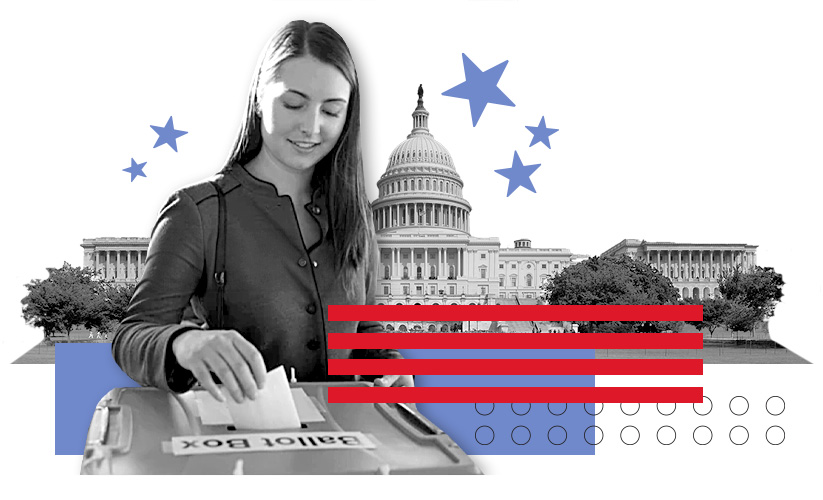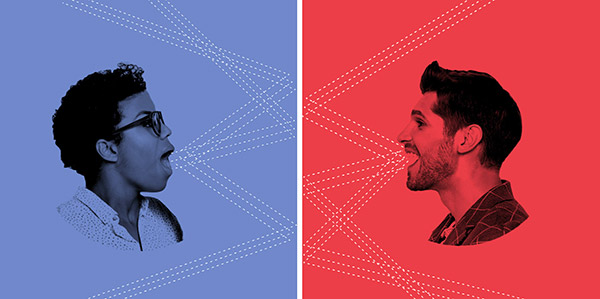Bridging the Divide

Differences of opinion no longer separate groups of people — they alienate us from each other. How can we heal this divide? By understanding the kinds of differences that exist and looking beyond the obvious for solutions. Red Rooster Group draws from various sources to understand the nuances and develop effective solutions. Here are some ideas that have informed our thinking.
1. What is the Divide?
Tribalism: The Science Behind Us v. Them
From politics to everyday life, humans have a tendency to form social groups that are defined, in part, by how they differ from other groups. Oxytocin enhances the us v. them divide. Our brain processes us v. them in milliseconds. Trust is based on people who look like us.
It’s inevitable that we divide the world into us v. them, but we can also be manipulated into identifying who constitutes our tribe. Neuroendocrinologist Robert Sapolsky, author Dan Shapiro, and others explore the ways that tribalism functions in society, and discuss how—as social creatures — humans have evolved for bias.
Bias is not inherently bad. According to Beau Lotto, the key to seeing things differently is to “embody the fact” that everything is grounded in assumptions, identify those assumptions, and then question them. This video explains.
Automation Perpetuates the Red-blue Divide
In a March 2019 paper, “Automation perpetuates the red-blue divide,” Muro and his colleagues found that automation, as opposed to A.I., most hurts those who hold jobs that do not require college degrees, and that exposure to automation correlates with support for Trump.
Why Trump Still Has Millions of Americans in His Grip
“Social conservatives and white Christians” — have what Galston calls a “bill of particulars” against political and cultural liberalism.
- “They have a sense of displacement in a country they once dominated. Immigrants, minorities, non-Christians, even atheists have taken center stage, forcing them to the margins of American life.”
- “They believe we have a powerful desire for moral coercion. We tell them how to behave — and, worse, how to think. When they complain, we accuse them of racism and xenophobia.”
- “How, they ask, did standing up for the traditional family become racism? When did transgender bathrooms become a civil right?”
- “They believe we hold them in contempt.”
- “Finally, they think we are hypocrites. We claim to support free speech — until someone says something we don’t like. We claim to oppose violence — unless it serves a cause we approve of. We claim to defend the Constitution — except for the Second Amendment. We support tolerance, inclusion, and social justice — except for people like them.”
Conservative and Liberal Brains Might Have Some Real Differences
Scanners try to watch the red-blue divide play out underneath the skull. When 58 people with diverse political views were put into a brain scanner, this is what happened. The book “Predisposed” introduces political neuroscience, suggesting that ideological differences between conservatives and liberals are rooted in biological and personality factors. Research indicates conservatives generally seek security and predictability, while liberals are more open to novelty and complexity, with brain imaging studies showing structural differences that correlate with these tendencies. Despite these findings, political neuroscience also highlights the complexity of political behavior and the influence of partisanship on cognitive processes, suggesting a nuanced relationship between brain structure, political ideology, and behavior.
Many Differences between Liberals and Conservatives May Boil Down to One Belief
Conservatives tend to believe that strict divisions are an inherent part of life. Liberals do not.
New research by psychologist Nick Kerry and me at the University of Pennsylvania finds that the main difference between the left and the right is whether people believe the world is inherently hierarchical. Conservatives, our work shows, tend to believe more strongly than liberals in a hierarchical world, which is essentially the view that the universe is a place where the lines between categories or concepts matter. A clearer understanding of that difference could help society better bridge political divides.
How young voters feel about the presidential candidates and nation’s political divide
Part of “America at a Crossroads” series
A New Study Shows Us the Single Biggest Motivation for the Jan. 6 Rioters
4% of adults in the U.S. (about 10 million people) believe that the election was stolen and would be willing to participate in a violent protest. The greatest motivation for that is belief in the Great Replacement — the fear that the rights of minorities were replacing the rights of whites.
2. Healing the Divide
Between Groups
How to Get People to Talk to One Another Again? Citizens’ Assemblies
This interview explores the role that citizens’ assemblies play in gaining consensus on issues. Countries from Ireland to Mongolia have used these groups of representative citizens to discuss issues in a structured way. Some of these have led to policy changes. Jane Mansbridge, Harvard Professor and author of “Beyond Adversary Democracy,” thinks that, while there are obstacles to implementing them, citizens’ assemblies can support democracies.
Should We Cancel Political Parties?
Throughout the world, traditional political organizations are increasingly seen as dysfunctional. But can democracies live without them? This article explores that question.
The Secret to Better Storytelling for Social Change: Better Partnerships
No single organization or individual can pull off an effective storytelling campaign alone. Reaping the benefits of storytelling requires building better partnerships between three important players.
Between Individuals
Finding the Right Messenger for Your Message
Trusted messengers are important to the success of any advocacy campaign. This article explores eight archetypes and four audience contexts to help organizers find the right ones.
Forging the Divide: How to Win an Argument
Win an argument by understanding the other person’s perspective, reflecting it back (even elaborating on it), and then presenting your perspective. Jordan Peterson explains.
In This New Year, Can We Change More Than Ourselves?
Changing others begins with changing ourselves. This is a good place to start.
Organizations Healing the Divide
The Better Arguments Project is a national civic initiative created to help bridge divides – not by papering over those divides but by helping people have better arguments.
This nonprofit partners with community organizations across the U.S. to build a culture of dialogue across differences on charged political issues in American life.
The Rural Urban Bridge Initiative invites liberals and progressives to think differently, talk differently, and act differently in order to understand the causes of the rural-urban divide and then do something to repair it. They develop political, economic and communications strategies that build bridges and serve the common interests of working and middle class Americans.
Starts With Us is a movement to overcome political and cultural division in America by practicing curiosity, compassion, and courage every day.
David Brooks, writer for The New York Times and The Atlantic, one of our favorite people, started this organization to heal the divide. Check them out.
Podcast
Baratunde Thurston reimagines the word “citizen” as a verb and reminds us how to wield our collective power. Learn new perspectives and practices from people working to improve society for the many. Join writer, activist, and comedian Baratunde on a journey beyond politics as usual that will leave us all more hopeful, connected, and moved to act. One of Apple’s favorite podcasts of 2020.

Promoting Democracy
Strengthening our democracy and shoring up civic engagement is critical. Use our unique approach to advance your efforts on democracy, conduct get-out-the-vote and persuasion campaigns, as well as to revitalize your brand and promote your advocacy efforts for freedom and civil rights.
What do you need help with?
Developing a strategy?
Engaging your audiences?
Revitalizing your brand?
Raising more money?
Let’s Talk!
Whether you are looking to engage audiences, improve your brand, or raise money, we’re here to help you achieve your goals. We’re located in New York City and work with organizations across the United States and the world. Start the conversation.



